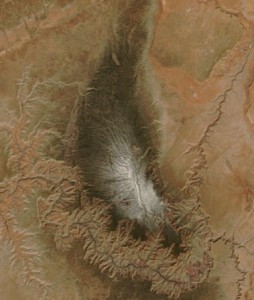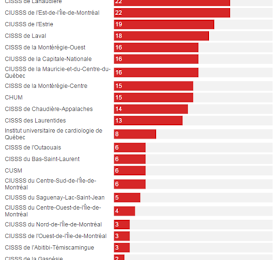(Image from Wikipedia: credit)
The last two sections of the new book The Grand Canyon, Monument to an Ancient Earth: Can Noah’s Flood Explain the Grand Canyon? looked at the layers of rock and sediment in the Grand Canyon area. The questions addressed focused on the age and formation of these layers (A Story Carved in Stone and Fossils Tell a Story). Part four asks questions about the canyon itself. How was the canyon formed in these sediment layers and when was it formed?
Was the canyon formed rapidly in moderately soft sediment recently deposited or was it formed slowly as water eroded away the hard sedimentary rock?
Although there are some difference of opinion when it comes to exact mechanisms, most young earth creationists support the notion that the canyon formed rapidly following the breach of dams holding back some large remnants of post flood waters. Three large lakes are identified, two for which solid geological evidence exists (although dated to millions of years ago, and it isn’t certain how large they were) and a third hypothetical lake required to bring the amount of water up to the necessary volume. Dam breaches have been known to form canyons rapidly so this mechanism isn’t entirely far-fetched. But, as Tim Helble and Carol Hill point out, the shape of the Grand Canyon isn’t consistent with this as a major mechanism. A breach or spill-over model has been considered for some features on a smaller scale – but it is an idea currently out of favor.
From the geologist’s point of view there are three major problems with the dam breach hypothesis. (1) The shape of the Grand Canton isn’t consistent with catastrophic scouring of a layered landscape. (2) The amount of water proposed (3 thousand cubic miles) isn’t enough to remove 1 thousand cubic miles of sediment and then carve through hard igneous rock at the bottom of the canyon. (3) There is no evidence for a very large lake containing even 3 million cubic miles of water. Rather than a lot of water in a short time, the Grand Canyon appears to have been carved by a lot of water (61 million cubic miles) over the last 6 million years. Something like 10 cubic miles of water a year … and we see the result.
When was the Grand Canyon formed?
Image by the National Park Service, available at Wikipedia (source). Click on the image for a larger version.
This is a hard question – how do you date a hole in a structure? We can date “something” but a hole is by definition “nothing.” The only thing that can be said with certainty is that the canyon is younger than the youngest rock layer in the region. The rocks at the rim were deposited 270 million years ago by “standard” dating methods – thus the canyon must be younger than this. Given the consensus belief that the region of the canyon was covered with the same layers found in the Grand Staircase, which were eroded away before the canyon was carved, the canyon must be younger than these layers. Thus geologists agree that the canyon is younger than 80 million years. Beyond this we have rambled into an area of active research with no strong consensus. The authors of this chapter (Gregg Davidson, Carol Hill and Wayne Ranney) note that the majority favor an age of about 6 million years although some argue “that incision of an earlier (“paleo”) canyon began long before that.” (p. 174)

The Kaibab uplift (darker area in image to the right, NASA satellite available at Wikipedia) is about 3000 feet high and the controversies center on the mechanism for cutting through this feature to form the current canyon.
The Kaibab formation warps upward dramatically from the Marble Platform east of the Grand Canyon, and contributes to the dramatic relief within the canyon. Water does not flow uphill, so how did the Colorado River manage to cut through such a large topographic rise? (p. 174)
The authors discuss possible mechanisms and use this example to discuss the process of science as well. Disagreement tends to be the way we learn and move toward the resolution of a problem. Disagreement is not indicative of weakness, but it does identify the growing edge of a field.
What about evidence preserved in the canyon?
Although it is hard to date “nothing” there is another approach that can help place limits on age. Joel Duff looks at remnants of life preserved in the caves of the canyon – packrats, pollen and giant sloths. The caves open today are relatively recent – but they do give evidence to tens of thousands of years of occupation. Packrat middens are dated to 20,000 to 10,000 years ago. This contains the remnants of plants and pollen over generations.
This record of past plant communities reveals a history of changing climate and a time when the Grand Canyon was much colder and wetter than it is today. For example, pack rat middens and dung in a number of caves contain organic matter that reveals long periods of a time when the lower reaches of the canyon were populated by juniper and ash forests. (p. 180)
These species are not found in the area today and there is no evidence for them coincident with human occupation of the region (ca. 6000 years ago by radio carbon dating).
There is also evidence for occupation of the canyon caves by giant sloths (15 feet tall, 2000 pounds – that’s giant!) over a span of 25,000 years, ending about 11,000 years ago. The caves thus are at least 35,000 years old and have witnessed a range of climate conditions over that time. Carbon dating has been called into question – but Joel notes that the gap between these huge animals and the earliest human evidence is hard to reconcile with the young earth timeline with all change compressed into some 4000 years. Sloths evolved from their ark “kind” (presumably much smaller), migrated to the canyon, left huge piles of dung, and disappeared, all before humans arrived in the region? This strains credulity.
The Grand Canyon is a marvelous place with a wealth of information. Careful evaluation of the evidence points to an ancient earth, with an evidence for historical development spanning great lengths of time.
The final section of the book come back to the question posed by the subtitle Can Noah’s flood explain the Grand Canyon? We will look at the authors’ summary of arguments for why the answer is no in the final post on this book.
How do you date a hole in the ground?
If you wish to contact me directly you may do so at rjs4mail[at]att.net
If interested you can subscribe to a full text feed of my posts at Musings on Science and Theology.







